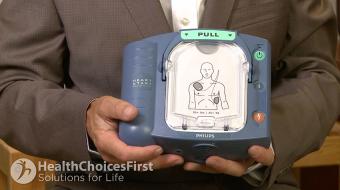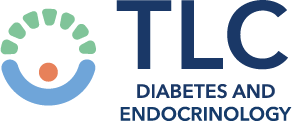Chronic Disease Education
Acute Condition Education
Working with your Family Physician
Working with Allied Care Providers
Heart Attack

Knowledge is Power.
True/False - Quiz: Do You Understand Heart Attacks?
Information - Heart Attack
 Heart disease is the leading killer of men and women in North America. A heart attack is usually the result of coronary heart disease (CHD), also called coronary artery disease. If you have coronary heart disease, plaque builds up inside your coronary arteries, eventually blocking the flow of oxygen-rich blood to the heart muscle. This buildup is called atherosclerosis, and the blood is usually cut off when an artery is blocked by a blood clot, causing a heart attack.
Heart disease is the leading killer of men and women in North America. A heart attack is usually the result of coronary heart disease (CHD), also called coronary artery disease. If you have coronary heart disease, plaque builds up inside your coronary arteries, eventually blocking the flow of oxygen-rich blood to the heart muscle. This buildup is called atherosclerosis, and the blood is usually cut off when an artery is blocked by a blood clot, causing a heart attack.
Heart Attack Symptoms
Heart attack symptoms include:
• Dizziness
• Shortness of breath
• Pressure, tightness or pain in the chest or arms (sometimes this feeling spreads to other areas of the body)
• Sweating
• Lightheadedness or dizziness
• Fatigue
• Nausea or vomiting
Women may have a heart attack without feeling any chest pressure. It's also important to remember that not everyone will experience the same symptoms or the same severity of symptoms. You may feel symptoms come on suddenly, or have warning signs and symptoms hours, days or weeks before a heart attack. If you suspect you're having a heart attack, the earlier you seek emergency medical help the better. If blood flow is cut off for too long, the heart muscle can die.
Heart Attack Diagnosis & Treatment
 Heart attack diagnosis usually involves an electrocardiogram (ECG), which records the electrical activity of your heart, and blood tests to measure the presence of certain enzymes. Other heart attack tests include chest x-ray, cardiac MRI, echocardiogram and angiogram. Emergency heart attack treatment may include CPR if the person stops breathing, using manual chest compressions or a defibrillator. Other treatments include aspirin to reduce clotting, thrombolytics (also called clotbusters), heparin, nitroglycerin and antiplatelet agents. If surgery is required, you might undergo coronary artery bypass surgery or coronary angioplasty and stenting. As you recover from a heart attack, you will start a cardiac rehabilitation program.
Heart attack diagnosis usually involves an electrocardiogram (ECG), which records the electrical activity of your heart, and blood tests to measure the presence of certain enzymes. Other heart attack tests include chest x-ray, cardiac MRI, echocardiogram and angiogram. Emergency heart attack treatment may include CPR if the person stops breathing, using manual chest compressions or a defibrillator. Other treatments include aspirin to reduce clotting, thrombolytics (also called clotbusters), heparin, nitroglycerin and antiplatelet agents. If surgery is required, you might undergo coronary artery bypass surgery or coronary angioplasty and stenting. As you recover from a heart attack, you will start a cardiac rehabilitation program.
Most of these programs start while you’re in the hospital and continue for weeks or months afterwards. A cardiac rehabilitation program focuses on exercise, education and lifestyle changes. Many cardiac rehabilitation programs also offer emotional support following a heart attack. People who participate in a cardiac rehabilitation program are less likely to have another heart attack or to experience complications from a heart attack.
Talk to your cardiologist if you'd like more information on heart attacks.
Visit HealthChoicesFirst.com for more videos and resources on heart health.
Print this Action Plan and check off items that you want to discuss with your healthcare provider
-
Heart attack symptoms include dizziness, shortness of breath, tightness or pain in the chest or arms, sweating and nausea or vomiting.
-
Heart attack diagnosis usually involves an electrocardiogram (ECG), which records the electrical activity of your heart, and blood tests to measure the presence of certain enzymes.
-
If surgery is required, you might undergo coronary artery bypass surgery or coronary angioplasty and stenting.
-
Medications to treat a heart attack may include aspirin to reduce clotting, thrombolytics (also called clotbusters), heparin, nitroglycerin and antiplatelet agents.
-
People who participate in a cardiac rehabilitation program are less likely to have another heart attack or to experience complications from a heart attack.


